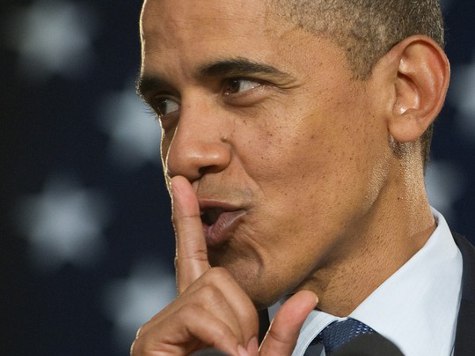The House Committee on Energy and Commerce released a reportTuesday which details some of the ways in which the Obama White Househas side-stepped its promise to be transparent in the way it conductsbusiness. This means it’s a good time to review some of the many waysthe Obama administration avoids transparency even after promising to bethe most transparent administration in history:
- Fighting FOIA – In early 2009 the White House refuses to respond to FOIA requests for visitor logs leading Citizens for Responsibility and Ethics in Washington to file a lawsuit to obtain the logs. CREW’s legal council tells the Washington Post “I don’t see how you can keep people from knowing who visits the White House and adhere to a policy of openness and transparency.”
- Transparency begins…sort of – In early September 2009 the White House agrees to fulfill the FOIA requests and begins making White House visitor logs available online in return for CREW dropping its lawsuit. This settlement exempts all visitor logs prior to September 15, 2009. The House Committee report says that “less than one percent of the approximately 500,000 meetings from President Obama’s first eight months in office…have been released.”
- White House Omits Names of Famous Visitors – Politico reported in April 2011 that celebrities who visited the White House including Bob Dylan and Joan Baez” were not listed in the visitor logs. Similarly, Johnny Depp and Tim Burton were never listed in the logs though they attended a fancy Halloween party at the White House. Analysis by the Center for Public Integrity finds that friends of the first family” are also omitted from the logs.
- Coffee with Lobbyists – In a direct attempt to avoid reporting on lobbyist visits to the Obama White House, hundreds of lobbyists meetings are held at nearby coffee shops. The NY Times reports that “because the discussions are not taking place at 1600 Pennsylvania Avenue, they are not subject to disclosure on the visitors’ log that the White House releases as part of its pledge to be the ‘most transparent presidential administration in history.'”
- Who is Meeting Whom? – The NY Times’ also reports that White House visitor logs frequently misrepresent who was present at meetings. Rather than openly state who a lobbyist met with “The ‘visitee’ often shows up not as the White House official who was the host, but as the administrative assistant who arranged the meeting.”
- Jackson Place – In addition to frequenting Caribou Coffee and Starbucks, the administration also keeps additional meeting space in the form of a townhouse near Lafayette Square. Lobbyists who spoke to Politico said the White House moved meetings with lobbyists to the Jackson Place townhouses after one or two official meetings which would appear on the logs.
- Confidentiality in Writing – In addition to scheduling meetings off site to hide them from visitor logs, the White House also asked some lobbyists to sign confidentiality agreements which would forbid them from discussing the meetings.
- Use of Personal Email Accounts for White House Business – One of the revelations in Tuesday’s report is the use of private email accounts to conduct White House business. Since White House email accounts are archived and potentially subject to FOIA, using private accounts is a way to keep some conversations off-book. For instance, in 2010 Deputy Chief of Staff Jim Messina used his private account to sent the following message to PhRMA lobbyist Jeffrey Forbes “I will roll pelosi to get the 4 billion…As you may have heard I am literally rolling over the house. But there just isn’t 8-10 billion for something they said 2-3 for last night.” The Committee report gives several more examples of senior officials using private email accounts, all of them gathered from recipients.
- Flooding the Zone – In a supposed nod to transparency the White House visitor logs list everyone who enters the White House on a sightseeing tour. Since these tours take place every week, the result is that the visitor logs are crowded with thousands of names of tourists who had not business with the White House beyond admiring the architecture. If the White House was truly interested in government transparency it would either omit these names or place them on a separate list. By flooding the zone with names the administration also creates another problem:
- False Positives – Did you know that William Ayers, Michael Moore, Bertha Lewis and Jeremiah Wright have all visited the White House? They have, but the White House claims they are not the famous individuals with these names, just ordinary folks. Of course there’s really no way to know that for sure. By listing the names of so many visitors, the White House creates a lot of false positives like these. But are they really false? We just have the White House’s word for that.

COMMENTS
Please let us know if you're having issues with commenting.